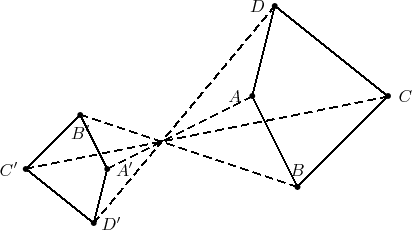Why is Equation 1 true?
Equation 1 stems from the definition of the reduced mass system. The reduced mass system is an accelerating frame of reference for a binary star system in which the heavier star is seen as having no acceleration. However, the physical orbital properties of the reduced mass system must naturally be identical to those of the original binary star system, since both describe the same pair of orbiting bodies. (Another way to think of this is to realize that the reduced mass system is simply a result of viewing the original binary system in an accelerating reference frame, so distances are unchanged.)
Therefore, the distance between the two stars must be identical in either system. In the reduced mass system, the distance was $a$, and in the original system, it was $a_1 + a_2$. Therefore, $a = a_1 + a_2$.
Why is Equation 2 true?
First, we consider that there is no external force acting on the system as a whole. Therefore, the center of mass is not accelerating, and there is an inertial reference frame in which the center of mass of the stars is stationary. This is the reference frame that will be used.
Next, we remind ourselves that the ratio of distances $r_1$ and $r_2$ remains constant throughout the orbit. For $O$ to be the center of mass, $r_1 m_1 = r_2 m_2 = ((r_1 + r_2) - r_1) m_2$. Solving for $r_1$, we find that:
$$ r_1 = (r_1 + r_2) \frac{m_2}{(m_1 + m_2)}$$ and
$$ r_2 = (r_1 + r_2) \frac{m_1}{(m_1 + m_2)}$$
Therefore, $$\frac{r_1}{r_2} = \frac{m_2}{m_1}$$
And the ratio of the two distances is always constant.
Now, we use the geometric principle of homothety (Wikipedia) to complete the proof. Homothety states that if every point in an image is flipped around a "center point" in equal proportions, then the resulting image will be similar to the original one. This is demonstrated in the image below:

In this case, the center of our transformation is the center of mass of the system. Since the ratio of $r_1$ to $r_2$ is constant, we know each ellipse is similar to the other. Since the ellipses are similar, they clearly have equal eccentricities.
Source: http://farside.ph.utexas.edu/teaching/336k/Newton/node50.html


